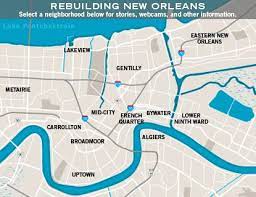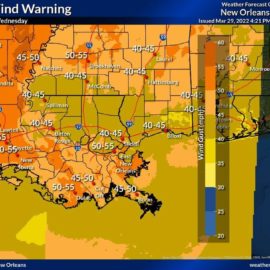
Mardi Gras and climate change? I think more of litter and clean up. But then I think – plastic beads, throws and other items.
What do Mardi Gras, mosquitoes and plastics have in common? I’ll start with the calls I heard from krewe members and parade-goers at this year’s Mardi Gras. You know, the ones that went like this: “Hey, Mister! Throw me some higher sea level rise, larger hurricanes, and more flooding rainfalls!” “Hey, you! Catch these for increased risks of forest fires, toxic air pollution and brutal petro-dictators!” And my favorite: “Hey, Mister! Throw me a chance to clog the drainage systems so our streets, cars and even houses flood more often and our insurance rates continue to rise!!” OK, no one was yelling that. Well, not intentionally. You see, as we’ve allowed our treasured tradition to morph into a bacchanal of plastic beads and throws produced from fossil fuels, we have become partners in the demise underway of our landscape and the rest of the planet.
nola.com
Plastics and what their production does to the atmosphere.
That’s because research shows the production, use and disposal of plastics is a serious contributor to the warming climate by annually releasing more than 850 million metric tons of greenhouse gases “equal to the emissions from 189 five-hundred-megawatt coal power plants.” And those emissions are powering the acceleration of the sea level rise Louisiana scientists say could swamp much of the state below U.S. 90 in the next three decades. Our beloved holiday contributes to that disaster through the estimated annual purchase of 25 tons of plastic beads.
Plastics have other down features that often makes them something that we need to cut from our lives, but it is hard.
Of course, the damage from plastic throws extends far beyond climate change. Plastic production can release a long list of deadly toxins that are later found in our air, water and food for decades. Some throws end up defacing the beauty of the trees that help make this city livable. But here’s the really embarrassing thing about the Mardi Gras bead obsession: No one really wants them for more than a few hours. For years now, parade-goers who don’t snag a throw in the air haven’t even bothered to pick it up from the street, while hotel workers say tourists simply leave them in their rooms where they are put out with the trash. And, of course, many left on the streets are swept by rainfall into drainage systems, causing blockages that lead to flooding. In 2018, some 46 tons were removed from clogged catch basins — 96,000 pounds in just one five-block stretch of St. Charles Avenue. I’m old enough to remember when a great Mardi Gras haul was a couple dozen necklaces, a doubloon or two and — most prized of all — a Zulu coconut. Today reputations for the quantity of throws have become more important than their quality among the krewe members as well as the spectators.
There are alternatives but they will cost more. But if the throws go back to quality not quantity the cost will be worth it.
That destructive practice is no longer necessary because there are alternatives. An LSU professor invented biodegradable beads made from algae dust, and some krewes following Zulu’s tradition by using shoes, purses and doubloons have found those to be their most popular throws. They’re more expensive than plastic beads, but a small price for saving our landscape. All of which brings me to those mosquitoes. Regular readers know I’m fond of a Dali Llama saying about how to approach a problem that seems overwhelming: “If you think you’re too small to make a difference, try sleeping in a tent with a mosquito.” My first Coastal Mosquito Award goes to Townsend Myers. A native New Orleanian, Myers has been a lifelong lover of Mardi Gras and a krewe member for many years. But he finally quit. “I got so disgusted with the waste and damage the piles of plastics were doing, I couldn’t stand contributing to the problem anymore,” he said. “And here’s the thing: It’s obvious to the krewe no one really wants those beads. They leave them on the street.” “I still love Mardi Gras. I love going to parades. But there’s really no need for the plastic beads. We don’t need them. We’ve got to change,” Myers said. “So, I quit riding.” We need more mosquitoes.
Thank you Bob Marshall for this description of a mosquito. It is a better one than the ones you don’t want in your tent.



